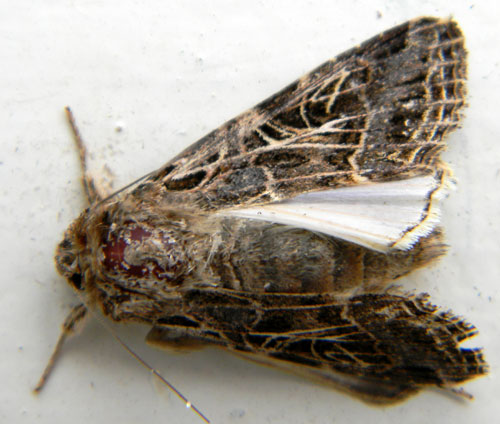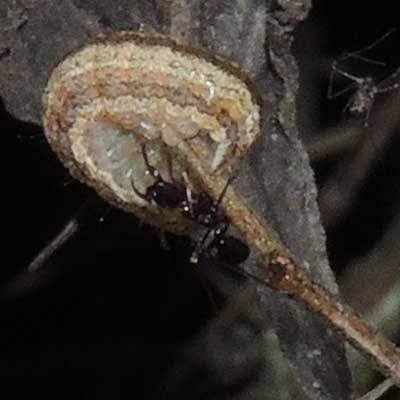Cutworm Moth

This moth was found alighted beneath an electric light in a farming area near Eldoret, Kenya, October 2010.
These insects are largely nocturnal and hard to see. Yet their feeding and damage is often noticed and the culprits therefore a mystery. The adult form is a moth that flies by night looking for nectar sources, places to lay eggs, and mating opportunities. Electric lights draw them in from their night time journeys, possibly by disrupting their navigation systems. There are quite a number of different kinds with differences in geographic distribution, favored food plants and habitats.
Whereas the adult moths are of no concern to people, the caterpillars are important pests in many crop fields. By day these caterpillars, or worms, hide under the soil or dead leaves. At night they chew the stems, leaves and roots of plants. Seedlings, freshly emerged from the soil, are particularly attractive to these plant feeders. Some noctuinae are known as army worms because of there sometimes huge numbers and devastating damage. Birds such as fiscals or chickens will catch them if they are able to see them in fading light. Before changing into a moth, the caterpillar must undergo metamorphosis as pupa. Pupae are dark brown, shiny, and without legs. They will move if disturbed, but normally remain well concealed beneath the soil.

This cutworm larva was forced out of its hiding spot in the soil layer by an army of driver ants. Iten, Kenya, Dec. 2015.